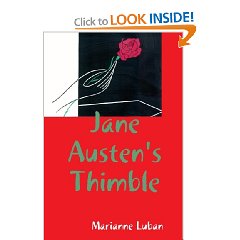Many years ago, ladies [and longer before that even men] used to wear blood-stopping garters to hold up their stockings. There were other contraptions, too, that were constricting, like corsets that scarcely allowed one to take in air. Such things went the way of the Dodo but there are still influences in life who make it unnecessarily difficult to breathe freely. Sometimes it's because they're so damned dry you can't stop sneezing from the dust. For well over a decade now, I have been a member of the Egyptologist's Electronic Forum, hereafter the EEF. If nothing else, it was a respite from the flame wars so hard to escape elsewhere in the virtual world. It was full of smart people instead of trolling idiots. But now I feel it has stagnated in its own mainstream Egyptology pool [seldom a lively discussion about anything], resembling more a bulletin board ["reference wanted" or "wanted, Dr. Pishwasser's email address"] than any actual forum for the exchange of ideas or viewpoints. Egyptologists tend to hold their cards pretty tightly to their chests, anyway. They would rather put their views and ideas in journals before somebody else can steal them. Added to that, it appears to me that the EEF maintains an attitude of conservative self-importance that, in my opinion, is rather comical when one considers the lack of conservative self-importance attached to Egyptology elsewhere these days, with both extremes attempting to exert control in their own fashion.
It's been my opinion, for a long time, that the modus operandi of the individual running the EEF makes it seem like one false move on the part of any poster could bring down the fatal scorn of the Egyptologists of the planet--as if that discipline didn't have its share of strange squirrels but consists only of well-adjusted brilliants who never serve up a lame theory or squabble among themselves. And, actually, many Egyptologists are never heard from on the EEF, although I don't know if they are on the membership roster. Few people now recall exactly how the EEF got started. I do! At one time, in the later '90's, the only Internet discussion forum exclusively devoted to ancient Egypt was run by me. It was called the Osirislist and had a substantial membership, some of it extremely knowledgeable, and even a grad student or two. Maybe even a couple of Egyptologists. I'm not sure anymore. It was my goal just to forward the posts and engage in no strict moderation, but a certain clique of hostile people kept on re-subscribing under false monikers as soon as they were booted off the list for being rude or otherwise causing trouble. Other ultra-conservative types objected to my telling these people off on-list or making it plain what I thought of them. Oh, well, I could perhaps have handled things better--but it was a prototype and quite civil compared to the Usenet groups. At least it wasn't dull but I, personally, could have done without the disruptions. Most of the members were nice folks.
Meanwhile, the current moderator of the EEF, Aayko Eyma, who was an Osirislist subscriber, wrote to me privately that he thought I should make him a co-moderator. I liked the man and admired his keen intellect but declined because I didn't know how that was going to work under the system the posts were being forwarded to the membership [shifts?] Then Eyma made it plain to me that, if there wasn't another moderator, certain parties were going to break away and begin a different forum. My response was "I am not stopping them". Thus was born the EEF, a totally different operation from the free and [mostly] unchecked exchange of ideas that took place on the Osirislist. Since I was experiencing severe health problems at this period [it's never been too good this past decade] I asked the membership for a volunteer to take over the Osirislist completely and at some point it died away. But, perhaps not suprisingly, when the EEF began to function I noticed that persons who had aided in setting it up and were on its "Advisory Board" were some of my worst defamers in the unruly Usenet groups. It started, at least, to become clear who some of the "certain parties" were who wished another moderator and who were only too happy to come to the assistance of Eyma even though they really did not have the expertise to participate on the EEF as posters. Some of them had been banned from the Osirislist, which evidently frustrated them no end. I think it was because one of its founders was a grad student at Yale University that the EEF became associated with it and has a Yale email address. But the charter of the forum makes it clear that "the postings and moderation of this list are not Yale-sponsored" and that the forum is owned and operated by Aayko Eyma.
What I do know is that the EEF has a very large membership, over a thousand subscribers. In the main, I have had nothing against it, despite how it began, and enjoyed participating, myself, but there were certainly times when I though it was over-moderated, hyper-controlled. When I received an email, over the years, from Aayko Eyma, always entitled "Your Moderated Message", I usually heeded his suggestions, sometimes even welcomed them, and rarely protested. My guess, however, was that members who had PhD after their names never received this "moderated message" email--but I can't swear to it. Moreover, long ago, Eyma gave the order that a certain party and I were never to reply to each others posts because we were involved in a lengthy dispute. This seemed a wise decision to me and I seldom found myself interested in replying, anyway. But I noticed, from time to time, that the other party managed to get around the edict by replying to another member who had responded to me, lending the impression that I was not worthy of a direct response, myself. The other subscribers were not aware of the moderator's rule. This tactic did not seem to trouble Mr. Eyma--and I still said nothing. After all, it had seemed to me that Aayko was a far superior moderator, a lot more sensible, knowledgeable and equitable, to any other I had encountered on other Internet fora--and most of them were really terrible. One could not mention them and Aayko in the same breath. And that's why, until recently, I gave up trying to discuss anything about Near eastern topics with anyone save on the EEF.
However, I have now been forced to re-evaluate the positive aspect of the EEF in my life versus the negative influence of having to "keep mum" too many times. Why should I? I may not have a degree relative to Egyptology but I have been studying and researching for decades. I have educated myself extensively in those areas that interest me. I have been able to hold my own on that EEF just fine for how many years now? If Aayko Eyma, himself, has a degree, I would have no idea in what field. I have never seen it mentioned. In the past couple of days I received a "Your Moderated Message" email from Eyma, saying he planned to take a URL out of my post to which I was directing the membership for references and images "in case another subscriber [whom I leave nameless] wishes to post the information first". In the past, people have sometimes posted the exact same information in response to a query, as they would be bound to do. What would happen if each one waited for someone else to supply the info? Nothing at all. That "excision" really made no sense to me whatsoever--and this time I protested. Not that it did any good--no more than it would ever have done. I think I will take my protest one step farther, though, because when it comes right down to it, the EEF and I can live without one another just fine. Enough is enough. Time to say goodbye.





















